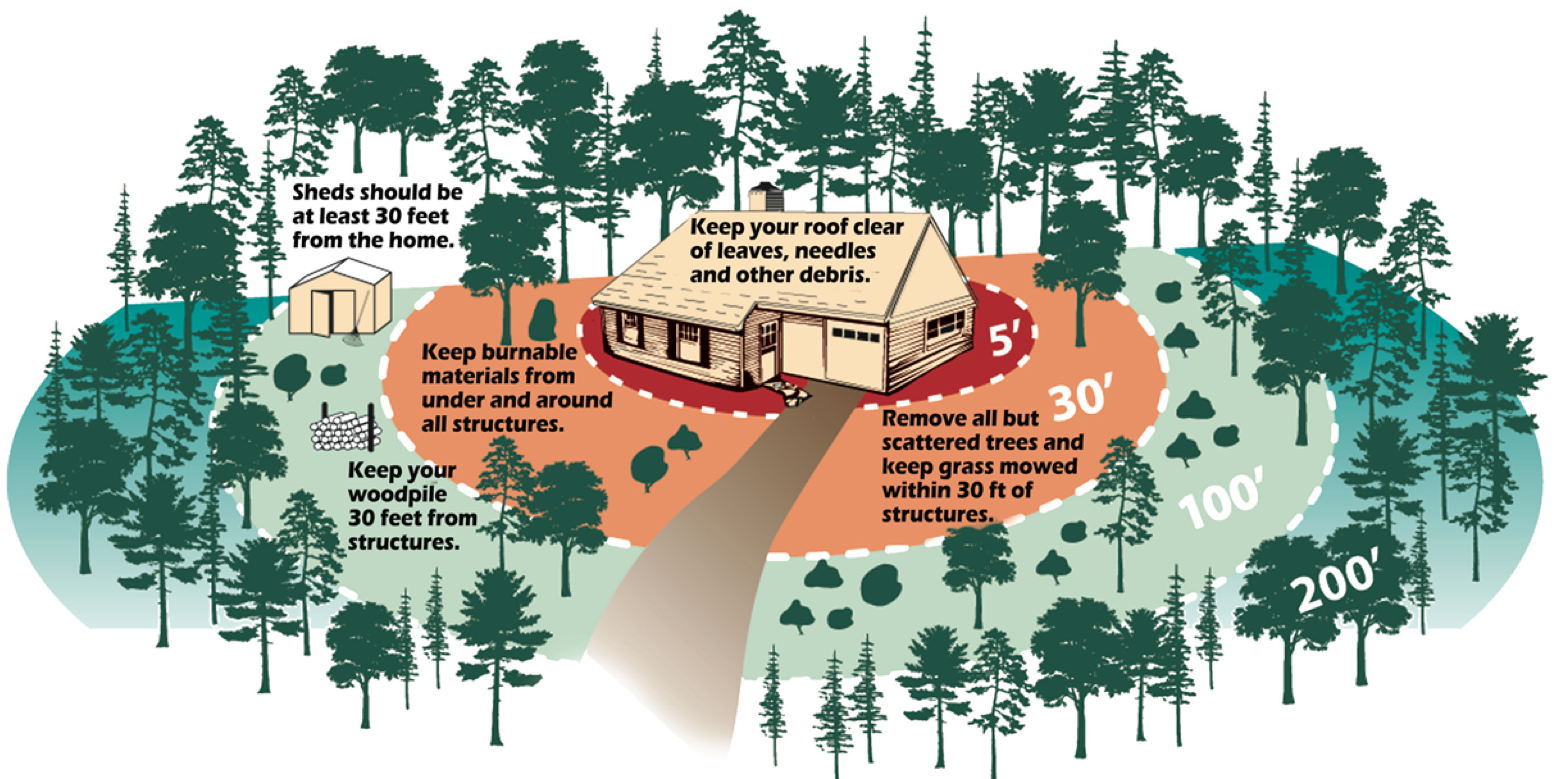The National Wildfire Coordinating Group has standards for Wildland Fire Engines, which govern which sizes of nozzles, how many feet of what hose, plus tank and pump capacities, etc., various engines need.
Equipment, PMS 200 | NWCG
The very largest wildland engines carry 750-gallons of water. Small ones carry only 50-gallons. The Type V Engine, which is what most of the Forest Service Engines are, carry 400-gallons. Wildland engines typically carry 300-feet each of 1-1/2 and 1-inch hoses. Any hose larger than 1-1/2-inch is too much for one guy to handle. An engine has a crew of two. There will be another two to four guys in the chase truck, but their job is to use the hand tools to knock down vegetation.
Basically, keep the growth down to provide defensible space, and you don’t need much water.
The other thing is making the structures themselves fire resistant. Small mesh, (1/4-inch or smaller), metal screens on all vents, which won’t allow wind-blown embers into the structure. A metal roof which won’t ignite if an ember lands on it. Fire resistant siding. Shutters for windows, so they don’t burst from the indirect heat.
You can buy fire retardant chemicals through HomeDesperate. You can mix and apply the fire retardant a day or two before there is a fire, and mist it as a fire approaches. With two tanks, you could fill one with retardant by adding water from the other tank to agitate and mix it.
I'm working on developing something similar, but with a single tank, a 3-hp pump as a backup, and running the primary pump off the PTO. I'm not planning on any hose greater than 1-inch. Plumb it so the pump discharge goes to a pressure relief valve with a return to the tank, followed by a pressure regulator to control the pressure to the nozzle. And, I'm going to gauge it in feet of head instead of psi. Lots easier for my engineer brain to memorize how many feet of head the nozzle needs, what the feet of head loss per length of hose is and just add or subtract for any change in elevation in feet. Using psi for fire engines never made sense to me. You have to convert from elevation to psi to compensate for height above or below the engine, and when you do conversions, you make mistakes.

thegoatscapers.simdif.com

